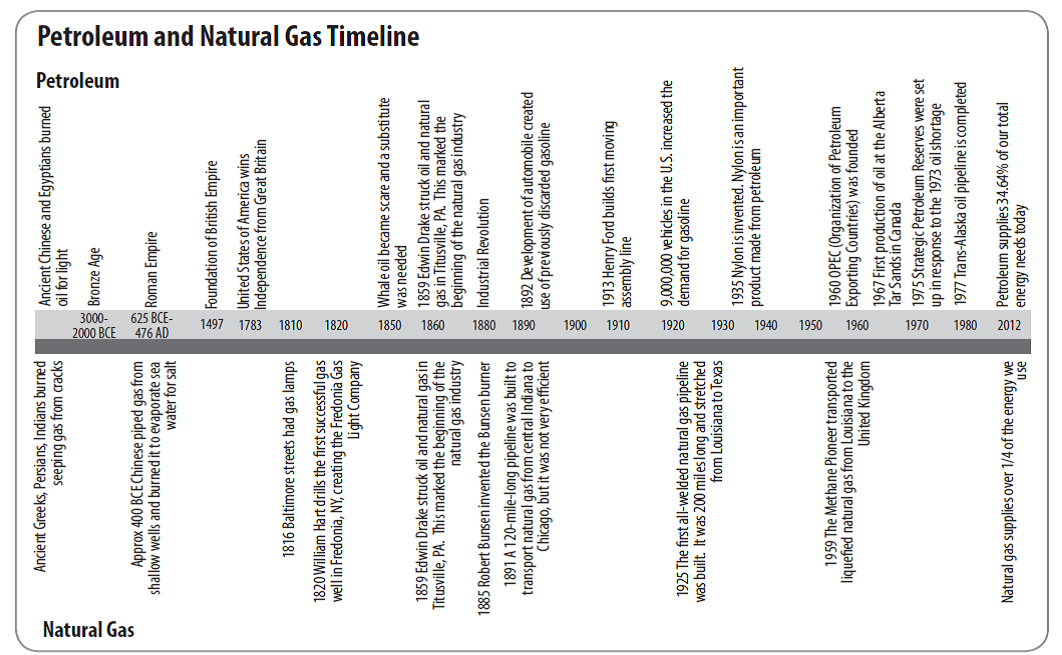OIL AND GAS
 An Estimate of Undiscovered Conventional Oil and Gas Resources of the World (USGS),
An Estimate of Undiscovered Conventional Oil and Gas Resources of the World (USGS),
Petroleum is a mixture of hundreds of different hydrocarbons. Hydrocarbons are molecules containing hydrogen and carbon that exist sometimes as a liquid (crude oil) and sometimes as a vapor (natural gas). Hydrocarbons are typically made from the remains of tiny sea plants and animals that died and were buried on the ocean floor for millions of years. Layer upon layer of the plant and animal remains built up. This pressure combined with heat from the Earth’s processes slowly “cooked” the plant and animal remains into hydrocarbons. These hydrocarbons flowed into empty spaces in the surrounding rocks, called traps. Finally, an oil-soaked rock—much like a wet sponge—was formed. The traps were covered with a layer of solid rock, or a seal of salt or clay, that kept the oil and gas from escaping to the surface. Crude oil, or petroleum, is held inside the rock formation, similar to how a sponge holds water.
Hydrocarbons are chemically bonded carbon and hydrogen atoms. There are some intermolecular attractions that affect the properties of the compounds. In general, the larger the molecule, the greater the intermolecular attraction, and the more likely the compound is to be liquid or even solid at room temperature. However, increasing numbers of carbon-carbon bonds or carbon-hydrogen bonds represent an increasing amount of energy available per molecule.
Petroleum and natural gas are fossil fuels. Petroleum is often called crude oil. Petroleum and natural gas are considered fossil fuels because they were formed from the remains of tiny sea plants and animals. When the plants and animals died, they sank to the bottom of the oceans.
Over time, the plant and animal remains were buried by thousands of feet of sand and sediment, which turned into sedimentary rock. As the layers increased in depth, they pressed harder and harder on the decayed remains at the bottom. The heat and pressure eventually changed the remains into petroleum or natural gas.
Both are classified as a nonrenewable energy source because they take hundreds of millions of years to form. We cannot make new petroleum reserves or natural gas deposits in a short period of time. Natural gas from underground reservoirs is considered a nonrenewable energy source, but there are some renewable sources of methane, such as landfills.
Not all organic material buried underground turns into petroleum or natural gas. Certain geological conditions must exist within the rock formations for the transformations to occur. First, there must be a trap of non-porous rock that prevents the material from seeping out, and a seal (such as salt or clay) to keep the material from rising to the surface. Even under these conditions, only about two percent of the organic material is transformed into petroleum.



